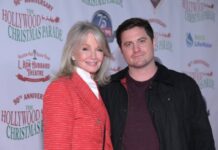Maybe you’ve seen his cameo in Yellowstone. Perhaps you came across his obituary in 2022.
Now, you’re wondering who Buster Welch was and why he’s considered such a legend in Texas.
Short answer? He’s got multiple NCHA titles under his belt.
Read on for the long answer!
Buster Welch: Quick Bio

Did you know that “Buster” isn’t even his real name? Check out this quick-fire fact list:
- Full Name: Fay Owen Welch
- Date of Birth: May 23, 1928
- Birthplace: Sterling, Texas
- Date of Death: June 12, 2022
- Partner: Sheila Welch
- Profession: Rancher and horse trainer
- NCHA Lifetime Earnings: More than $1.6 million
7 Facts About the Man Who Understood Horses Like No Other
Before we dig further, it’s important that you know what “cutting” means in this context.
When a horse rider “cuts” off a cow, they’re separating it from the herd. I know this sounds simple enough, but it actually requires a ton of intelligence and physical ability from the horse, along with lots of patience on the rider’s part.
It’s so tricky that people have full-on competitions to judge cutting horses. Buster Welch was a legend in those competitions.
Here are seven must-know facts about him:
1. Buster Welch Spent His Early Childhood on a Stock Farm

Fay Owen “Buster” Welch was born in Sterling County to Owen and Fay Lucas Welch. The couple already had seven children, and Buster was the youngest.
Shortly after giving birth to Buster, Fay Lucas Welch passed away. The eight kids were dispersed among their relatives. As fate would have it, Buster ended up in his grandparent’s care.
His grandfather, Bud Welch, was a retired peace officer who managed a stock farm with his wife, Sarah. That’s where Buster’s passion for ranching started budding.
But sadly, he didn’t get to live with his grandparents for long.
2. Welch Knew What He Wanted in Life Very Early and Chased It

Buster’s father remarried and moved with his second wife to Midland, taking Buster and his stepchildren with him.
Buster didn’t care for this shift at all. He became a truant and tried running away more than once. After all, the little boy knew he wanted to be a rancher, and he wasn’t going to let anything get in the way.
One cold night, little Buster managed to lead an old horse away from the family house and never turned back. Mind you, he was still in grade school at the time.
How could a young boy make it on his own, you ask. Well, he got a job with Foy and Proctor (also in Midland). The number of cattle heads that their farm handled at the time was five-figured!
So, this job was the perfect chance for young Buster to learn the basics of breaking broncos and cutting horsemanship.
From there, Buster Welch landed jobs at other notable ranches, including the Pitchfork, the Long X, and the 6666. But Welch still dreamt of running his own ranch one day.
3. Marion’s Girl Changed Welch’s Life

Buster Welch got involved in cutting horse competitions early on. He saw the new National Cutting Horse Association (NCHA) as a chance to put his talents to use and make some money on the side.
He started competing on Chickasha Mike (a horse he had bought from Homer Ingham for $125), but I wouldn’t say it was the most important stallion in Buster’s life.
People in the business started recognizing Buster’s talent and horsemanship. Naturally, they thought he could help shape their horses into cutting champions. One of the first to actually send a horse to Buster was Marion Flynt.
Flynt’s horse was none other than Marion’s Girl.
Buster Welch managed to turn the little mare into a two-time NCHA World Champion and Hall of Fame member. In return, she helped build his reputation as a talented cutting horse trainer.
Over the years, he trained more championship-winning horses, including Mr. San Peppy.
4. Welch Saw Massive Opportunity in Futurity

Aside from the main NCHA competition, Buster Welch left a legacy in Futurity events.
Futurity is a limited-age event. Think of it as a chance for younger cutting horses (three-year-olds or so) to debut.
Luckily for Welch, the event was a great money-making opportunity. You see, once a cutting horse was trained, it could last for years and years, which meant that the need for skilled trainers was limited.
However, if owners wanted to show new horses each year in Futurity events, they needed a good trainer more often. This, of course, meant more work, money, and fame for trainers/riders like Buster Welch.
In fact, Welch was the first rider to claim an NCHA Futurity Open Championship. That was back in 1962, with a horse called Money’s Glo. Over the next 15 years, he won four more titles (with Chickasha Glo, Dry Doc, Rey Jay’s Pete, and Peppy San Badger).
5. A $250,000 Statue Stands in Welch’s Honor in Fort Worth

With four championships and five Futurity titles, it’s no wonder that Buster Welch is an NCHA icon.
But simply inducting him to the American Quarter Horse Association (AQHA) Hall of Fame, the NCHA Hall of Fame, and the Texas Cowboy Hall of Fame wasn’t enough recognition—at least not for the city of Fort Worth.
Artist Kelly Graham gave the city council a bronze sculpture of Buster Welch riding Little Peppy and cutting a cow. In 2019, the council found the perfect spot for the statue, right next to Gate 42 at the Will Rogers Memorial Center.
6. Buster’s Wife Was Also in the Cutting Horse Business

Buster Welch wasn’t the only trainer in the family. His wife, Sheila, was pretty talented, with an Equi-Stat record of more than $1 million.
As a young girl growing up in Fresno, California, Sheila Welch dabbled in various sports. However, her true passion was riding horses.
In 1966, she moved to Texas, where she met Buster Welch. By 1972, the two were married.
By the mid-70s, the Welch couple were living together in Kingsville as Buster was a training consultant for King Ranch. But later on, they returned to West Texas, managing their family holdings.
The couple enjoyed 40-something-odd years together before Sheila’s death in 2014.
7. Buster Welch Had a Cameo in an Episode of Yellowstone

Did you follow Kevin Costner’s neo-Western drama series Yellowstone? If so, you’ll probably remember the scene where Jimmy wakes up to a conversation between Ross (the senior ranch hand at the famous 6666) and an old cowboy.
That old cowboy was the cutting legend himself.
For many ranching and riding enthusiasts, the cameo was a nod to Welch’s golden years. But the episode also helped introduce younger generations to a real-life horse training icon.
Final Thoughts
If you could go back in time and watch Buster Welch at work in person, which horse would you like to see him train? My vote always goes to Marion’s Girl!




